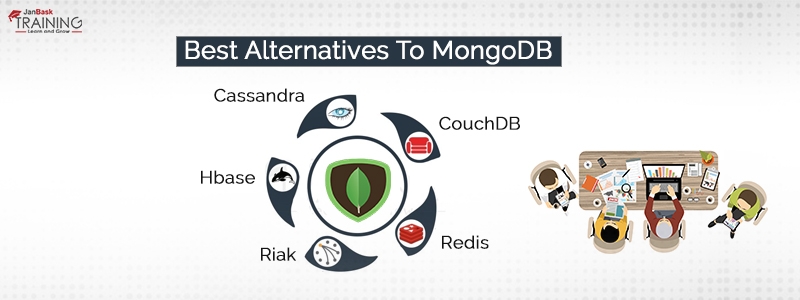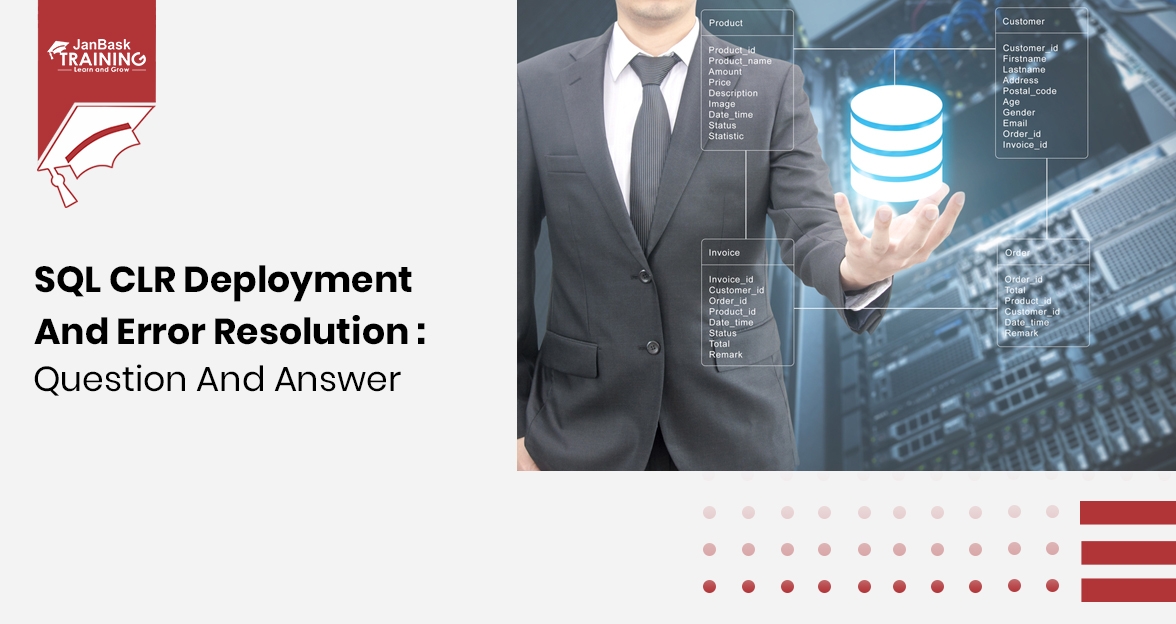 Grab Deal : Upto 30% off on live classes + 2 free self-paced courses - SCHEDULE CALL
Grab Deal : Upto 30% off on live classes + 2 free self-paced courses - SCHEDULE CALL

 Grab Deal : Upto 30% off on live classes + 2 free self-paced courses - SCHEDULE CALL
Grab Deal : Upto 30% off on live classes + 2 free self-paced courses - SCHEDULE CALL

For skilled and creative IT professionals, there are a bunch of attractive job opportunities to explore in the database domain. According to research, MongoDB is expected to reach more than $5 billion by 2020. So, you have huge chances of pushing yourself forward in the MongoDB space with the right skill set and domain knowledge. Also, if you think that MongoDB interview questions are not enough, then enroll yourself in a mongodb demo class to learn what all concepts it holds.
In this blog, we would discuss the top 50 MongoDB interview questions answers for intermediates, advanced workforce, and job interviews.
Learn SQL Server in the Easiest Way

Mostly, interview discussions start from the basic level even if you are intermediate with 2-3 years of experience or an experience with more than three years of experience. After basics, you are taken to the advanced level and asked some tricky questions too. Let’s go ahead and learn about some of the frequently asked mongoDB interview questions.
Q1). What is MongoDB?
MongoDB is a document database that delivers high performance, more scalability, and high availability, etc.
Q2). What are the features of MongoDB?
The major features of MongoDB database are Indexing, Ad-hoc queries, Replication, Schema free, and Sharding, etc.

Q3). What is a “namespace” in MongoDB?
MongoDB has a collection that stores BSON (Binary Interchange and Structure Object Notation) objects. When collection name and database name are concatenated together properly, it is called a namespace in MongoDB.
Q4). Do you know how to create and drop a collection in MongoDB?
db.createCollection(name,options)db.collection.drop()Q5). How to verify the connection used by MongoDB?
To see the connection used by Mongos use db_admincommand (“connpoolstats”);
Q6). Define the journaling features in MongoDB.
Journaling feature in MongoDB creates a write operation log to enhance durability. It is the temporary storage space that keeps only writing operations log as pending in the Journal directory. As soon as data is processed, it will be removed from the directory after every sixty seconds.
Q7). In replication, can some members use journaling while others not?
Yes, it is possible.
Q8). How to perform hot safe backups in MongoDB?
It is possible through journaling features in MongoDB.
Q9). How does the sharding feature make MongoDB more significant?
The process of storing data across different platforms is called sharding. It is a popular approach in MongoDB to meet the growing data demands. It is the horizontal data partition within a database or search engine where each partition is named as shard individually.
Q10). How will you define a replica set in MongoDB?
A group of Mongo Instances that are used to host the same set of data is called a replica set. In a replica set, one node is primary, and another node is secondary. Data usually replicate from the primary node to the secondary node as per the requirement.
Q11). How replication concept makes MongoDB more popular among users?
The process of synchronizing data across multiple servers is termed as replication. It increases redundancy and data availability with multiple copies of data across different database servers. With replication, you can protect the database from data loss.
Q12). Define the meaning of 32-bit nuances in MongoDB.
It is an extra memory mapped file activity with journaling. It will further constraint the size of the database to 32-bit builds. As of now, journaling feature is enabled on 32-bit machines by default.
Q13). What is the purpose of a profiler in MongoDB?
A profiler shows the performance characteristics for each operation against the database. It is usually required to find queries that are slower than usual.
Q14). What are the facts to consider when designing a schema in MongoDB?
Here are a few facts to consider when you are designing a schema in MongoDB.
Q15). How is it possible to transfer old files to the moveChunk directory?
It is possible to move old files to the moveChunk directory. At the time of normal shard balancing operations, these files are used as backups, and it is easy to delete when operations are complete.
Q16). What are the major components of Objectid in MongoDB?
The major components of Objectid in MongoDB are:
Q17). What is the command syntax to insert a document in MongoDB?
Here is the command syntax for inserting a document in MongoDB: database.collection.insert (document).
Q18). Do you know how to inspect the source code of a function?
The function should be invoked without any parenthesis to inspect its source code.
Q19). How will you check either you are using a master server or slave ones?
Here is the syntax to check either you are on the master server or not. Db.isMaster()
Q20). How many master servers can be used together in MongoDB?
MongoDB allows only one master server while CouchDB allows multiple master servers.
Q21). How can you check either Mongo is using any link or not? Tell us the command syntax for the same.
Here is the command syntax to view Mongo is using the link: db._admincommand(“connpoolstats.”)
Q22). What are the indexes in MongoDB?
Indexes are created in MongoDB database to improve the search performance.
Q23). What is the basic syntax for using indexes in MongoDB?
Here is the basic syntax for using indexes in MongoDB: db.collection_Name.ensureindex({key:1})
Here, the key is the column name present in documents.
Q24). Do you know the concept of “GRIDFS” in MongoDB?
GRIDFS is used to store and retrieve heavy-sized files like audio files, images, video contents, etc. It is generally used for storing the metadata and file chunks.
Q25). What are the best alternatives to MongoDB as per your work experience?

Q26). Is there any journal replay program in case of incomplete entries?
Each Journal write is consistent and cannot be replayed during recovery until it is complete.
Q27). Can you permanently delete an attribute of the object?
Yes, you can remove the attribute from the store then re-save () the object.
Q28). Do null values are allowed in MongoDB?
Yes, Null Values are allowed but only for the member of an object. They are not allowed for the database collection as it is not an object.
Q29). How to perform transactions or locking in MongoDB?
It does not use any traditional locking system or complex transactions that were used earlier. It is a lightweight database with fast and predictable performance. It keeps the transaction support extremely simple, and performance is enhanced ultimately. It allows a system to run the same transactions across multiple servers.
SQL Server Training & Certification

Q30). Why are data files so large in size?
It does aggressive pre-allocation of reserved space to avoid file system fragmentation.
Q31). How a replica set handles the failover?
It takes only 10-30 seconds to manage things. When the primary server is down, any other server is declared as primary and queries will execute in the same manner as earlier.
Q32). What is a master server in MongoDB?
It is the primary node that processes all the write operations for a replica set. In the case of a failover, some other server is declared as primary.
Q33). What is a slave server in MongoDB?
It is a secondary node member that applies operations from the current primary. Usually, a replica between primary and secondary node is synchronous, but the secondary node tries to stay as close to the current one as possible.
Q34). Is it necessary to call a “getLastError” method to make the writing durable?
This method confirms that a write operation has been completed successfully. It does not have any link with durability.
Q35). Should you start with a sharded or non-sharded environment?
Well, you should start with a non-sharded environment for a quick startup. At the same time, upgrading to sharded servers is easy and convenient later.
Q36). How do sharding and replication work together?
It is a logical collection of partitioned data consisting of a single server or a set of replicas. Using a replica set for every shard is mandatory.
Q37). When there is more than one shard for getting data?
All objects in a collection lie under a chunk. When there is more than one chunk, there are options for multiple shards to get the data. Usually, the default chunk size is 64 MB and you need a minimum of 64 MB data for migration.
Q38). What will happen if a document updated on the chunk is being migrated?
The update will go through the old shard first then changes are migrated to the new shard immediately before the ownership transfers.
Q39). What happens if a shard is slow or down?
If a shard is down, then the query will return an error. If a shard is slow, then Mongos will wait for it.
Q40). Have you noticed any drawbacks of the database? If so, please share with us.
Q41). What is the meaning of CRUD?
Create, Read, Delete, and Update
Q42). What can all languages be used with MongoDB?
C, C++, and Java.
Q43). Does MongoDB need a lot of RAM?
No, it can run over small RAM as well because space is allocated and reallocated dynamically.
Q44). Which type of NoSQL database is MongoDB?
It is a document-oriented and schema-free database.
Q45). What is the command to show the entire database in MongoDB?
It is “show dbs”.
Q46). What is the command to display all the documents in MongoDB?
Db.dbname.find()
Q47). What data types are supported by the MongoDB database?

Q48). Why pretty () method is used in MongoDB?
It is used to display data in a formatted manner.
Q49). What is the objective of using the limit () function in MongoDB?
It is used to limit the value display from the document. Here is the syntax for your reference.
Db.dbname.find().limit(number)
Q50). Name a few aggregate functions that are frequently used in MongoDB?
SQL Server Training & Certification

Here, we have listed the top 50 mongoDB interview questions and answers that are frequently asked by recruiters, which would help you in getting acquainted with the nature of questions you may encounter during your next interview. Usually, they start the discussion with basic questions and move ahead as you progress in the interview. If you are a java developer, then search for mongodb interview questions for java developers and if you are a database administrator, then search for mongodb dba interview questions.
So, we wish you all the best for your next interview and recommend you joining the Oracle certification program at JanBask Training to increase the overall chances of getting successful in the database domain. If there are more mongodb interview questions in your mind, you can mention them in the comment section.

SQL Server MERGE Statement: Question and Answer


Mastering INSERT and OVER DML Syntax: Interview Questions Guide

SQL CLR Deployment and Error Resolution: Question and Answer

Cyber Security

QA

Salesforce

Business Analyst

MS SQL Server

Data Science

DevOps

Hadoop

Python

Artificial Intelligence

Machine Learning

Tableau
Download Syllabus
Get Complete Course Syllabus
Enroll For Demo Class
It will take less than a minute
Tutorials
Interviews
You must be logged in to post a comment